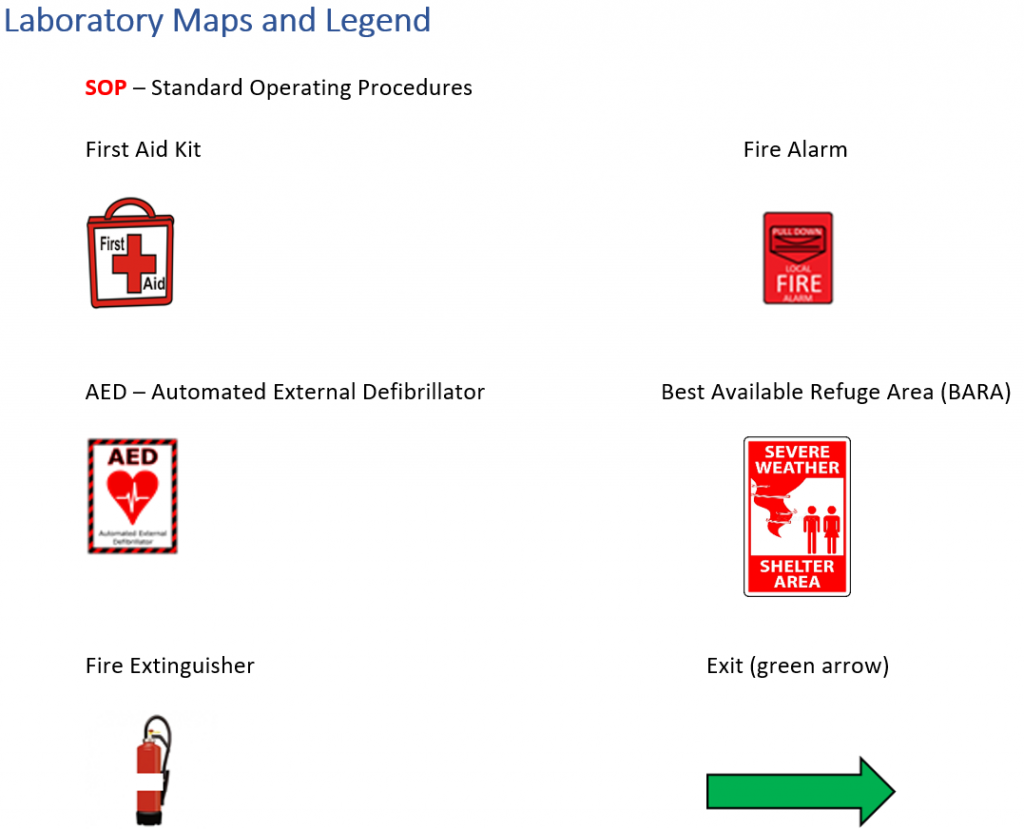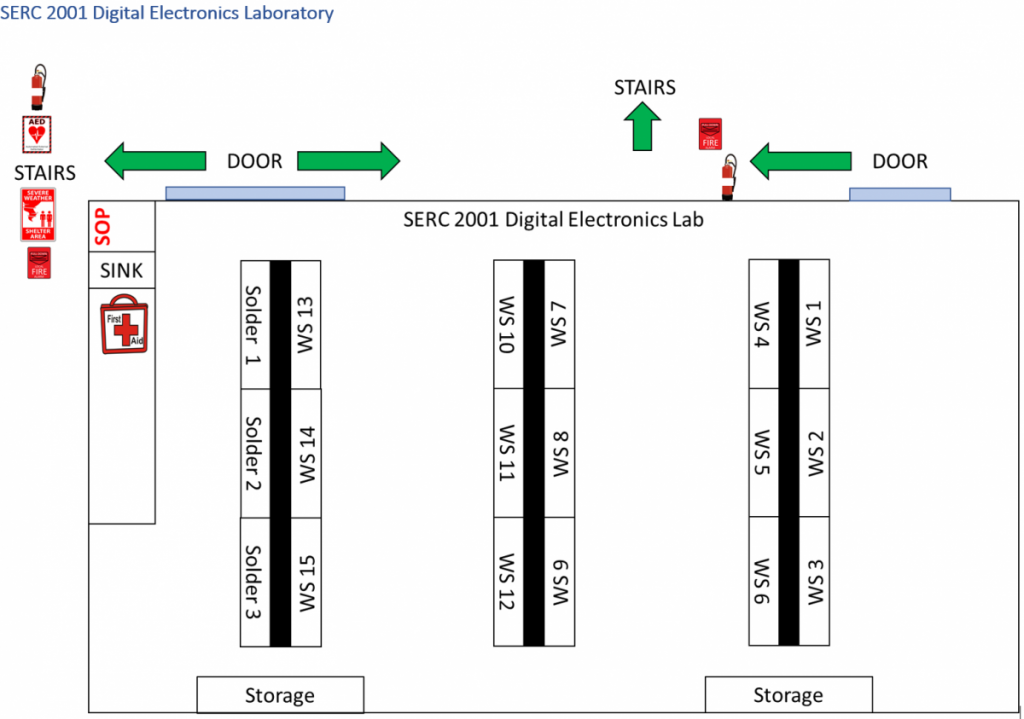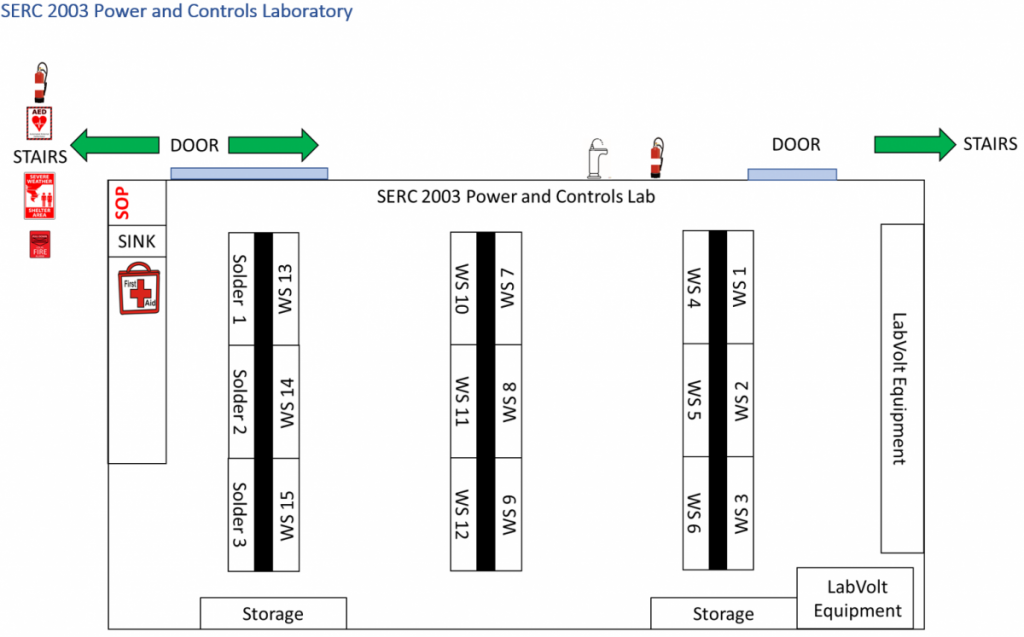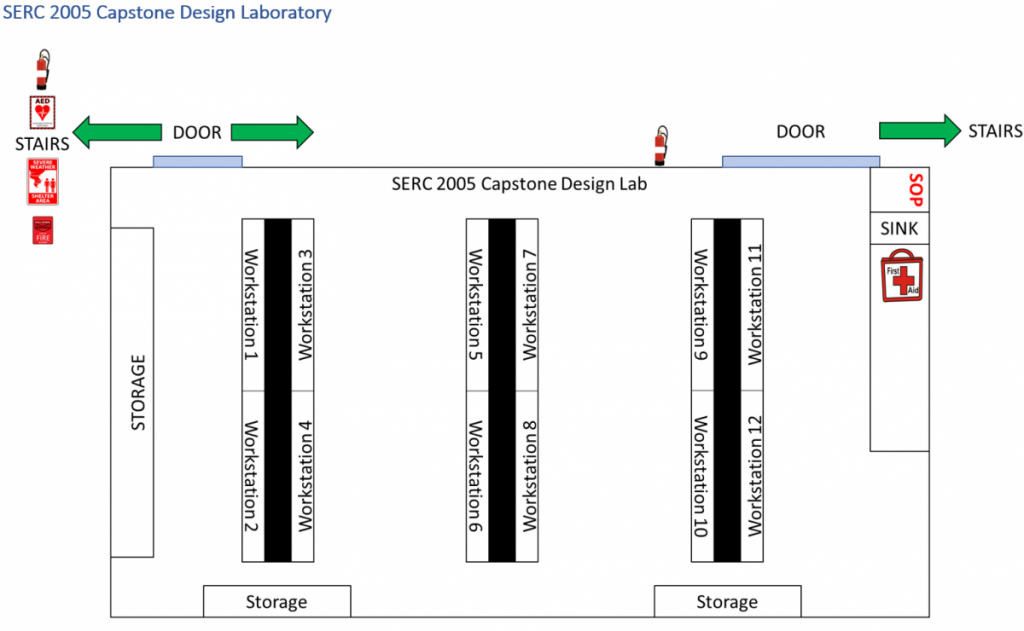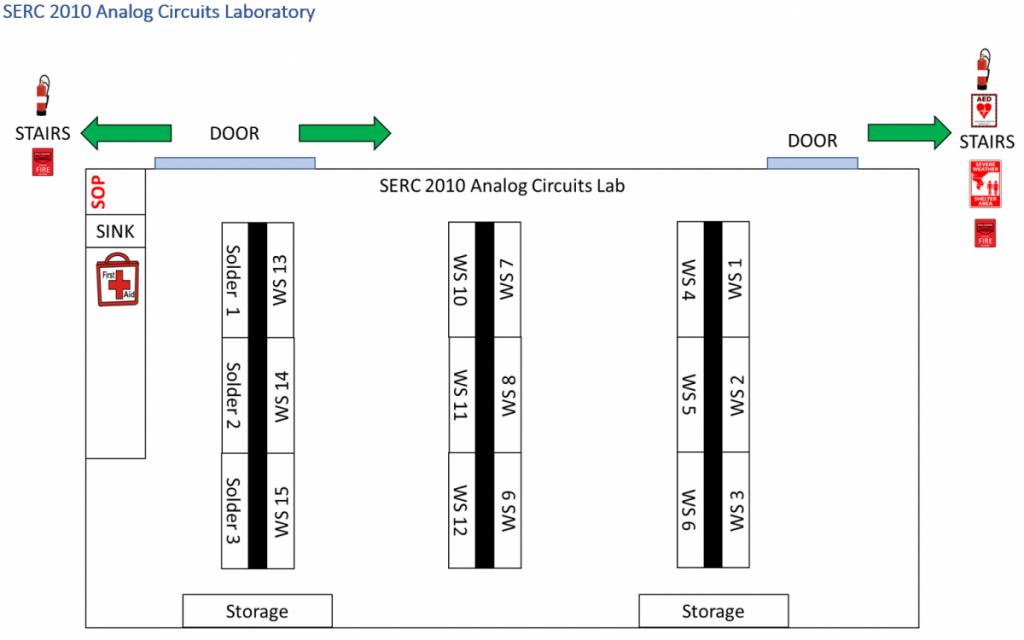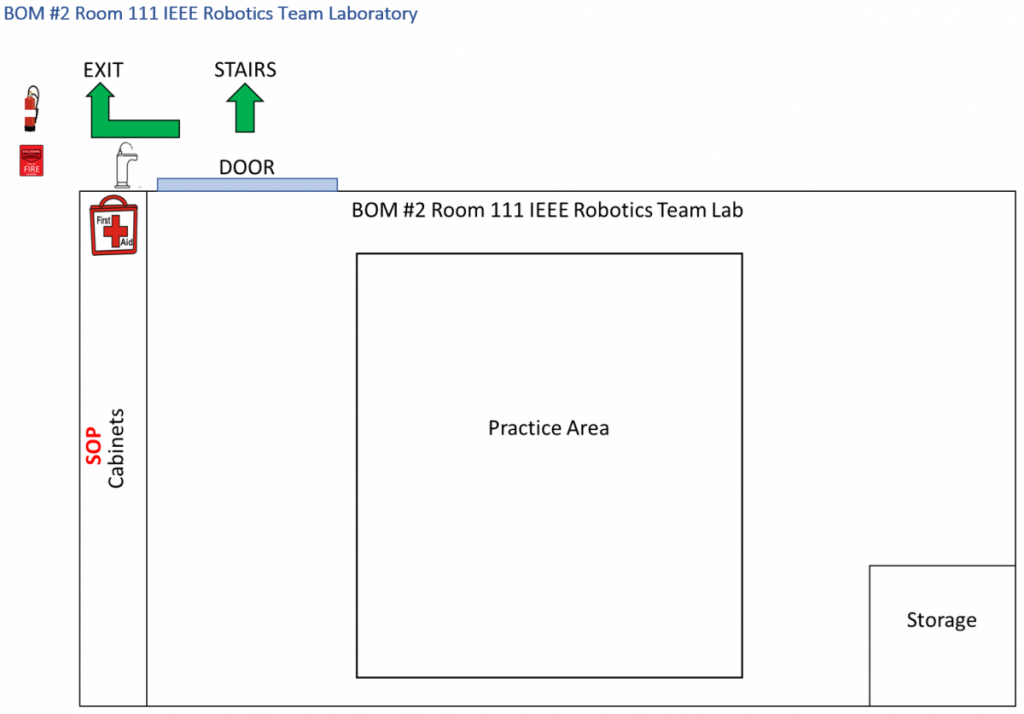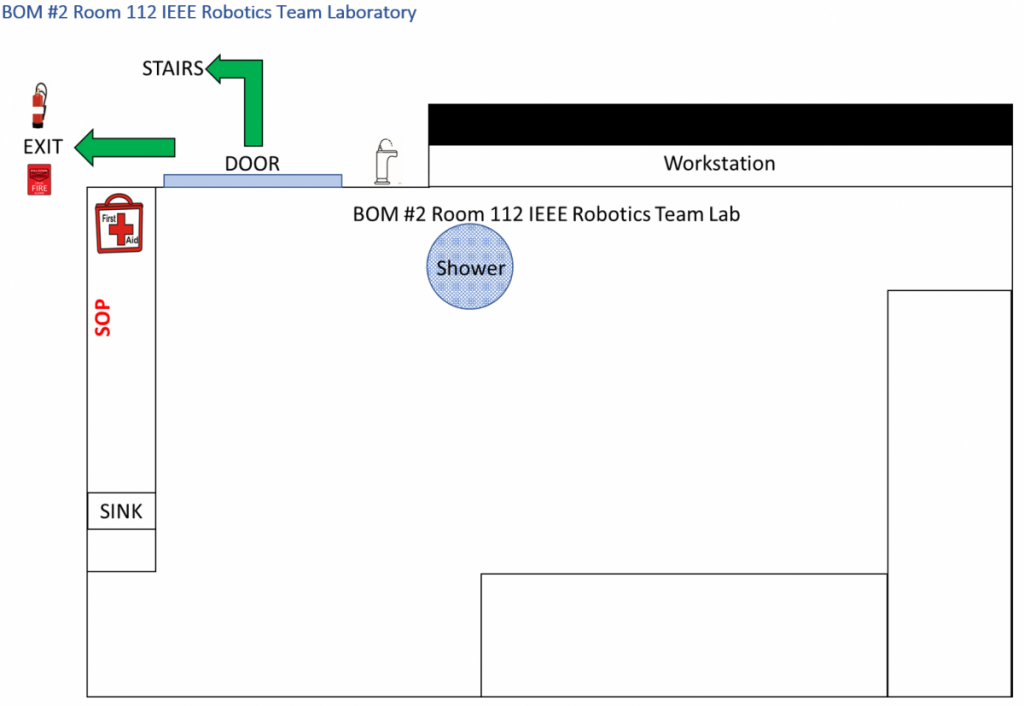ECE Instructional Lab Safety Manual
Objective
The purpose of this document is to provide students, faculty, staff, and visitors with an explanation of general safety procedures that should be followed when working in the undergraduate instructional laboratories. These procedures are intended to reduce risk of injury and to make the laboratory experience more enjoyable.
Emergency Contact Information
In case of an emergency, call UAPD at 205-348-5454
General Safety
- Food and drinks are prohibited in the lab
- Keep workspace and walkways free of clutter
- Backpacks should be stored on the shelf under the lab bench
- Long pants and closed-toe shoes are required in the laboratory
- Eye protection must be worn when soldering (safety glasses meeting ANSI Z87.1 Standard)
- Proper footwear is required to avoid slips and falls
- Contain long loose hair and remove jewelry
- Do not work with wet hands
- First aid kits are available and clearly marked in all ECE instructional labs
Electrical Safety
- Report any equipment malfunction to the Lab instructor immediately>
- Do not use probes or wires with broken insulation
- Soldering irons are essential in the development of circuits; however, users should handle these tools with great care because they can cause fires, serious burns, and the release of fumes when heating the solder. For this reason, always:
- Wear eye protection
- Be aware of your surroundings
- Keep soldering iron in stand and far away from flammable materials
- Work in an open and well-ventilated area and use the fume vacuum
- Never leave a soldering iron unattended
- In the case of electrical shock:
- Turn off power source immediately, then …
- Call UAPD
- Administer first aid
- In case of electrical fire:
- Turn off power source (if possible)
- Only use fire extinguisher designed for electrical fires (Class C)
- DO NOT USE WATER TO EXTINGUISH ELECTRICAL FIRES
Using a Fire Extinguisher
- Extinguishers are located in the hallway outside the lab – These extinguishers are designed for all classes of fires listed below
- Extinguishers are designed to fight different types of fires:
- Class A is for fires involving paper, wood, or cloth
- Class B is for fires involving flammable liquids
- Class C is for fires involving electrical equipment
- To operate a fire extinguisher, remember “PASS”:
- “P” stands for “pull the safety pin”
- “A” stands for “aim at the base of the fire
- “S” stands for “squeeze the thumb level or handle”
- “S” stands for “sweep from side to side as you slowly approach the fire”
Evacuation
- In case of a fire:
- Quickly and calmly walk out of the lab and toward the nearest building exit
- Pull the fire alarm as you exit the building
- Call UPAD
- In case of severe weather:
- The UA campus is equipped with sirens to warn of severe weather
- For the Lee J. Styslinger Jr. College of Engineering, the nearest official severe weather shelters are:
- The Greek Assembly Hall – Located on Campus Drive East between the Recreation Center (Rec) and Bryce Lawn Apartments
- The NERC basement – This area is available for students and employees; from the main entry doors, go downstairs to the lower level and thru the door to the basement
- North Lawn Hall – Located inside classrooms 1010, 1011, 1014, 1015, and 1018. Please note: Classes may be in session. If instruction is occurring in these classrooms during a tornado watch, do not interrupt the class. You may seek shelter in any classroom not being used for instruction during a tornado watch. During a tornado warning, all the identified classrooms are available for refuge
- John H. England Jr. Hall – Located on the basement level of the dormitory
- If leaving the building puts one at increased risk:
- For students in SERC – Go to the Best Available Refuge Area (BARA) located on the first-floor of SERC rooms 1013 and 1059 and get as low as possible at the bottom of the room
- For students in Hardaway Hall – Go to the Best Available Refuge Areas (BARA) located in the main 2nd floor hallway or, if there’s time, go to the first floor in the hallway outside rooms 132, 133, 139, and 140
- For students in BOM #2 – Go to the Best Available Refuge Areas (BARA) in Hardaway Hall located in the main 2nd floor hallway or, if there’s time, go to the first floor in the hallway outside rooms 132, 133, 139, and 140
Laboratory Maps and Legend
